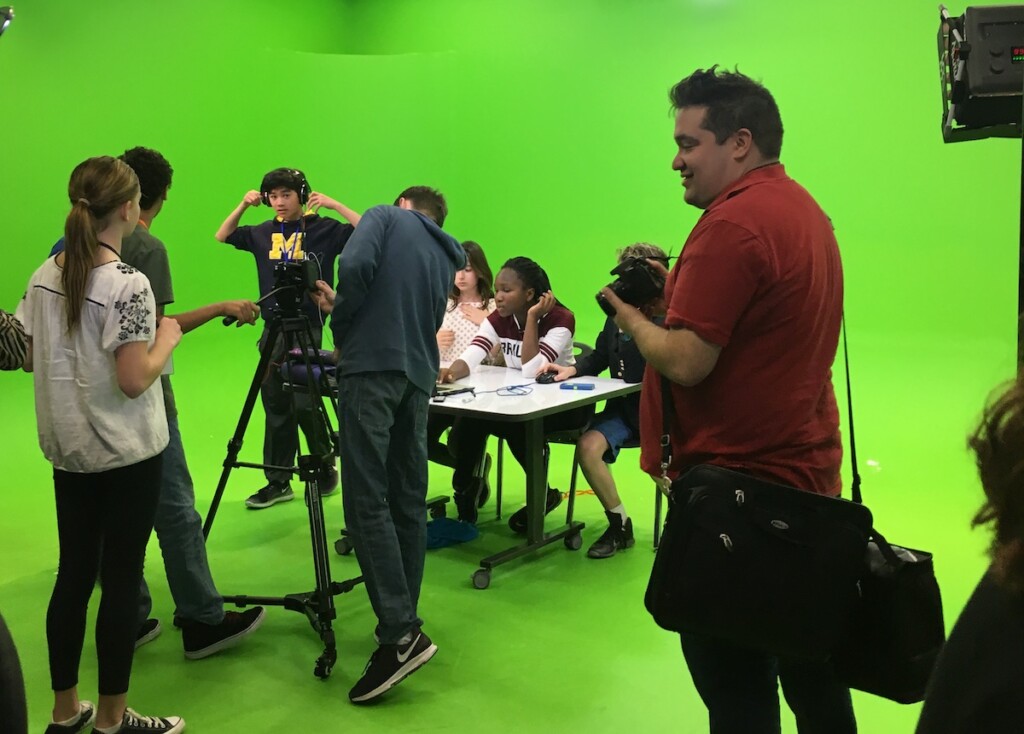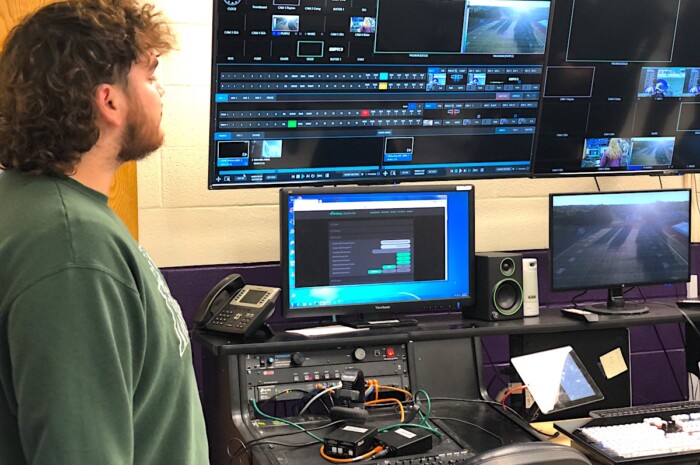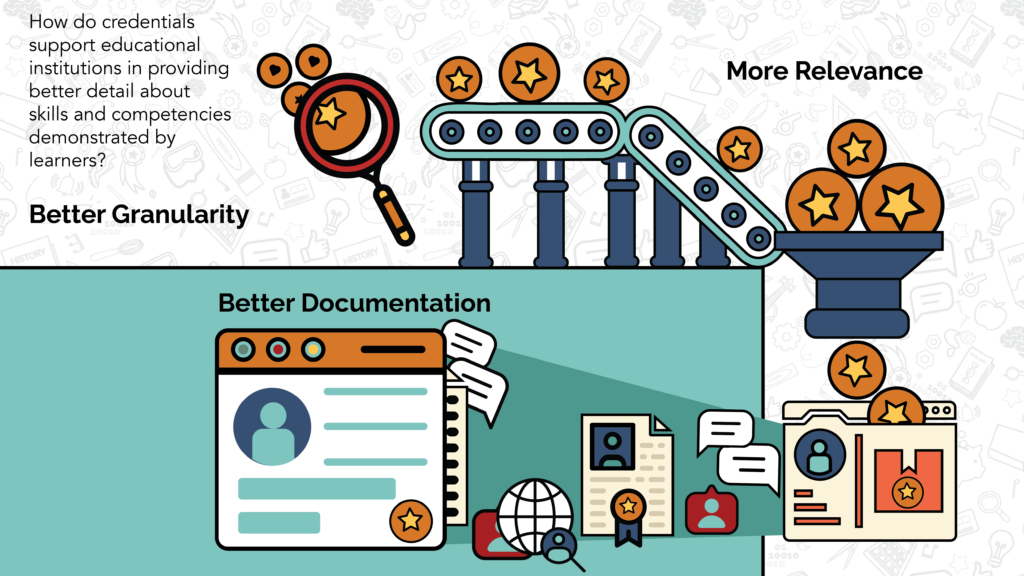Why Credential?
A credentialed learning ecosystem, focused on documenting skills and competencies that are considered important within the workplace (and higher education, for that matter), provides the granularity for better matchmaking between employer and prospective employee, as well as better feedback loops for learners as they prepare for professional life.
2.1 Vision
2.2 Better Granularity
2.3 Better Documentation
2.4 More Relevance



Vision
Learning happens throughout life and is not isolated to the K-12 or higher education sectors. Yet, often, validations of learning only happen in these specific areas. The system of evaluation based on courses, grades, and credit serves as a poor proxy for communicating skills given the variation in course content, grade inflation, and inclusion of participation and extra credit within course grades.
Credentialed learning provides a way to accurately document human capability for all learners throughout their life. A lifetime credentialed learning ecosystem provides better granularity around learning, better documentation of the learning, and more relevance for both the credential recipient and reviewer. This improves the match between higher education and/or employment with the individual, while also providing a more clear and accurate lifetime learning pathway.
With a fully-credentialed system, individuals can own well-documented evidence of a lifetime of learning and choose what and when to share this data. This technology enables every learner to have more opportunities for finding the best career match without today’s existing barriers around cost, access, and proxies.
Getting Smart Town Hall: Badging and Credentialing
We hosted a Getting Smart Town Hall as part of the New Pathways campaign and highlighted David Kidd from Harvard Project Zero, as well as Rachel Safferstone from XQ Institute (featured later in this publication). Watch the whole video, or see some notes from the event at the link.
Better Granularity
Challenge
How can educational institutions provide better detail about the skills and competencies demonstrated by their learners?
Secondary and higher education produce a set of evidence of learning organized around classes and grades that leads to a traditional one-page credential (diploma) with an attached transcript. This currently serves as a proxy for predicted success in the workplace. Yet, there is consistent evidence that graduates with these credentials are not prepared for the work in which they end up. A credentialed learning ecosystem, focused on documenting skills and competencies that are considered important within the workplace (and higher education, for that matter), provides the granularity for better matchmaking between employer and prospective employee, as well as better feedback loops for learners as they prepare for professional life. While classes may still exist as an organizing principle, so too may a myriad of other opportunities like work-based learning, work experiences, client-connected projects, entrepreneurial experiences, early college, and internships/apprenticeships. All of these learning experiences are best organized around a set of competencies that stack to form credentials. For example, for core competencies (often consisting of sets of standards), the typical class requirement could increase granularity by five times by dividing 24 classes into 120 credentials.
Rupert Ward on Granularizing Learning
Rupert Ward, a former Special Adviser and Project Lead for iDEA, one of the world’s most successful free educational technologies joined the Getting Smart Podcast to discuss badging and went long on granularizing as well as “learning fitness”. Check it out!
Better Documentation
Challenge
How can learners better collect, control, and curate credentials that describe their competency?
Within the existing landscape, demonstrated learning is captured in a variety of decentralized and disparate ways. We see a future where every learner has a Learning and Employment Record (LER) that documents their skills, competencies, and credentials across a lifetime. Learners control these records (self-sovereignty) via a digital wallet, exhibit exemplars in a portfolio, and share relevant artifacts with prospective education or employment opportunities. Accrued during formal/informal education and employment, these collections of demonstrated competencies provide a lifetime map of acquired capabilities. The use of credentials as part of an LER-based system increases portability of learner records across the education and employer ecosystems.

More Relevance
Challenge
How can employers or higher education more accurately identify talent that matches specific professional skill sets?
Industry-recognized credentials (IRCs), where possible, should be associated with demonstrated proficiency on core, technical, and transferable competencies. A clear connection between secondary-level learning and what is expected and needed in the workplace and/or higher education will increase the relevance of the learning experiences. Credentials that have value will support both employers and learners to more efficiently and equitably document skills. Those that earn an IRC signal competence to the employer in that sector, potentially advancing their professional careers.
Additionally, this more accurate assessment of talent benefits employers through quicker hiring, keeping new employees out of work for shorter periods of time, and reducing retraining costs. In 2020, Laffer Associates’ research estimated that this would provide aggregate gains to the U.S. economy of nearly $437.6 billion.

